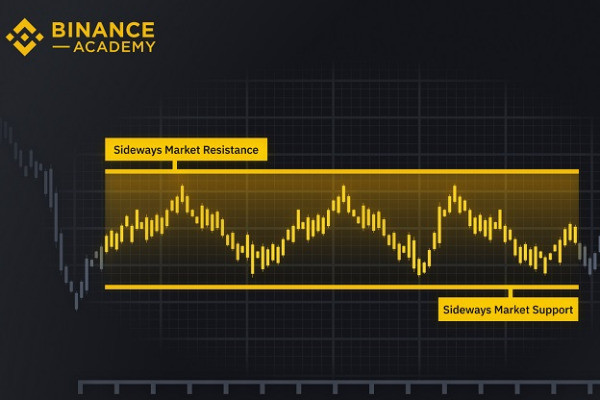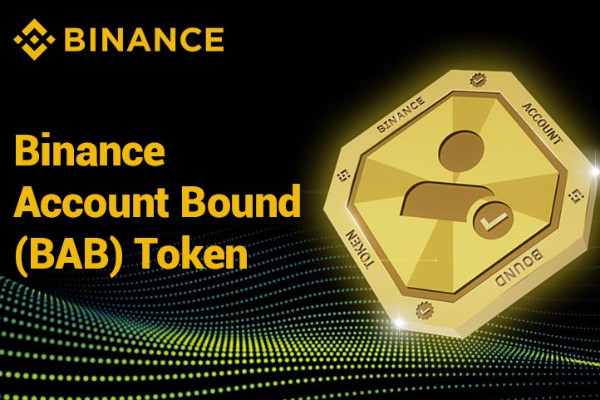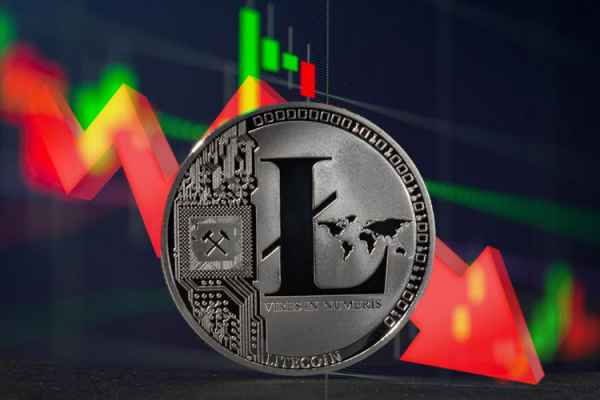Considering how extreme the volatility of crypto prices can be, diversification becomes somewhat a necessity. How to do it the right way?

If we refer to the basic rules of long-term investment, one of the essential things to minimize risks is to diversify one's portfolio, which involves allocating a varying percentage of your capital to different assets to maximize profit and reduce risk.
For example, a stock portfolio might consist of several segments of the stock market, such as energy stocks, tech stocks, and so on. This strategy is relevant to almost any tradable asset, including cryptocurrency. However, diversifying a crypto portfolio is not the same as diversifying stock or bond portfolios.
In this article, we will discuss more about diversifying a crypto portfolio, including:
- Why you should diversify your crypto portfolio: Investing in a single asset has a 50:50 chance of returns and losses.
- How to diversify a crypto portfolio: You must research first, allocate different proportions, then add stability to your portfolio.
- Recommended coins for crypto portfolio diversification: BTC, ETH, BNB, USDT, and SOL may be good for adding stability.
Okay, let's start with the first point.
1. Why Should You Diversify Your Crypto Portfolio?
With cryptocurrency becoming more mainstream in the past few years, many investors are starting to flock into the market and make crypto investments. However, more often than not, many crypto traders believe that investing in Bitcoin alone is sufficient for the longevity of their journey.
They argue that Bitcoin provides everything that crypto has to offer and promises a bright future compared to other coins. Therefore, instead of diversifying their portfolios, they allocate the funds to Bitcoin only despite thousands of other coins out there.
But is that really a wise move? Indeed, investing in a single asset can give you 100% of the gains associated with it, but remember that it can also be 100% of the losses. Also, remember that unlike the majority of traditional assets, the crypto market is highly volatile.
Prices can suddenly change direction several times a day. If the price of Bitcoin suddenly drops to rock bottom, those who are heavily invested in the digital coin would find a sudden crash in the value of their portfolio.
In order to minimize the probability of such a scenario, it's highly recommended to spread one's funds across a range of virtual currencies. This strategy will reduce the risk exposure during market downturns.
Since you only invest a fraction of your fund in one crypto and distribute the rest to various other coins, it is unlikely that your portfolio will be heavily affected by a crash of one asset. As a result, you will get a healthy and balanced portfolio.
2. How to Diversify Your Crypto Portfolio
Diversifying a crypto portfolio involves several steps to reduce risk and maximize potential gains.
Here's a breakdown of the process:
- Familiarize yourself with different cryptocurrencies, beyond just Bitcoin, by researching their technology, use cases, teams, and market potential.
- Allocate varying proportions of your portfolio to different cryptocurrencies based on factors like market capitalization, risk tolerance, and your confidence in their potential.
- Consider diversifying across different categories of cryptocurrencies, such as smart contracts, privacy coins, and decentralized finance (DeFi) tokens.
- Evaluate the correlation between cryptocurrencies to include assets with lower correlation in your portfolio, reducing the risk of simultaneous price movements.
- Include stablecoins like USDT to add stability to your portfolio, as it is designed to maintain a stable value.
According to CoinMarketCap, there are more than 14,000 cryptocurrencies in existence with a total market capitalization of around $2 trillion as of November 2021.
Choosing which ones you want to add to your portfolio can be tricky, but here's what you need to know: If you're a newcomer investor, it would be a great idea to start with coins and projects that have been existing for a while and have proven that they are reliable. Investing in new cryptos is probably risky if you're not sure about their track record.
Other than that, it's also great to stick with virtual currencies that are proven to be legitimate, especially if you're still not familiar with the crypto world. The easiest way to find out cryptos these criteria is by looking up the crypto market cap.
Also, don't forget to regularly review and rebalance your portfolio to maintain your desired asset allocation, selling overperforming assets and buying underperforming ones.
3. 5 Top Coins to Include in Your Crypto Diversification
Here we have summarized the top five recommended cryptocurrencies to diversify your portfolio. A balanced portfolio should at least contain one or more of these crypto coins in addition to some of the smaller currencies with smaller market caps.
Bitcoin (BTC)
Created in 2009 by someone under the pseudonym Satoshi Nakamoto, Bitcoin is currently the largest cryptocurrency with a market cap of no less than $1 trillion. As the first popular digital currency ever introduced back in 2009, it's quite unsurprising that the coin still holds its crown.
Bitcoin is also the first crypto to introduce blockchain, a decentralized public ledger that holds a digital record of every Bitcoin transaction, distributed across a network of thousands of computers. Since each transaction must be verified by miners through a complex cryptographic puzzle, Bitcoin can offer safe and easy transactions away from fraudsters.
Over the years, Bitcoin has gained so much popularity. Back then, a single BTC could be bought for about $500, but now it has skyrocketed to over $62,000. The growth is massive, and it's expected to continue in the next years.
Ethereum (ETH)
With a market cap of no less than $500 billion, Ethereum has become the second-largest cryptocurrency and blockchain network on the market right now. The currency itself is called Ether (ETH) and is used as the native currency for the Ethereum blockchain.
Similar to Bitcoin, Ether also has experienced big growth in recent years. The price went from around $11 to over $4,300 today, which is quite impressive. But what's great about it is that there is no limit to the number of ETHs that can be created.
Moreover, Ethereum is particularly famous among developers because the blockchain is able to offer a bunch of interesting potential applications. One of them is the smart contracts that automatically execute when certain conditions are met.
Other than that, it also enables users to create decentralized applications and Non-Fungible Tokens (NFT), which have gained a lot of attention from crypto enthusiasts lately.
Binance Coin (BNB)
Binance Coin was first introduced back in 2017 and has now become another famous cryptocurrency with a market cap of more than $98 billion as of November 2021. As the name suggests, Binance Coin is originally a cryptocurrency that can be used to trade and pay fees on Binance, one of the world's largest and most well-known crypto exchanges.
However, the coin has matured a lot over the years and has gone beyond facilitating trades on the platform. Today, Binance Coin can be used for trading, payment method, and even booking travel arrangements. In its early days, the cryptocurrency's price was just $0.10, but now it has risen to nearly $600.
Tether (USDT)
This next cryptocurrency is rather unique because, unlike the previously mentioned coins, Tether is classified as a stablecoin, so it is backed by fiat currencies such as US dollars. Hypothetically, this crypto keeps its value equal to the greenback; the value of one Tether is more or less the same as one US dollar.
What's interesting about this is that, in theory, this means Tether can offer a higher consistency than other cryptos since it's pegged to the US dollar. Therefore, it is favored by many investors who are aware of the extreme volatility of other crypto coins. The current market cap of Tether has reached over $73 billion in November 2021.
Solana (SOL)
Solana is the next big cryptocurrency with a market cap of over $68 billion as of November 2021. The crypto was built to help power decentralized finance (DeFi), decentralized apps (DApps), and smart contracts.
What's great about Solana is that it runs on a unique hybrid proof-of-stake and proof-of-history procedures, so it can process transactions rather quickly and securely. The native token of Solana is called SOL and it powers the entire platform. When it comes to crypto price, Solana started at $0.77 in 2020 and reaches $227.25 by the end of 2021.
The Bottom Line
Considering how extreme the crypto volatility can be, building a nice and balanced portfolio is highly important. Diversification is one of the most strategic approaches that you can use to help you allocate your funds better. If done right, a diversified portfolio can save you from critical losses and make your crypto investment profitable in the long term.
However, as there are thousands of cryptocurrencies to choose from, it can be confusing to diversify correctly. As explained above, you can start by investing in at least one crypto with a huge market cap and potentially maintain that position. Once you get more experience and knowledge about the crypto market, you can invest in other crypto coins that you might consider profitable and sustainable.
It's worth noting that while diversifying your portfolio can reduce risk, it can also lower the return of your investment. Therefore, it's entirely up to you whether you're going to fully diversify, partly diversify, or not diversify your portfolio at all. Whatever you decide, make sure to plan your actions and do not overtrade.

 Dedicated FREE FOREX VPS
Dedicated FREE FOREX VPS Free FOREX Virtual Private Server
Free FOREX Virtual Private Server MT4 Demo Contest, Get $500
MT4 Demo Contest, Get $500 Sign Up for an Account, Claim 60% Deposit Bonus
Sign Up for an Account, Claim 60% Deposit Bonus Free MT4/MT5 VPS 2024
Free MT4/MT5 VPS 2024 Send E-mail and Get Free Merchandise
Send E-mail and Get Free Merchandise $1K Refer a Friend Bonus for Pepperstone Pro clients
$1K Refer a Friend Bonus for Pepperstone Pro clients Maximize Your Earnings with 100% Deposit bonus
Maximize Your Earnings with 100% Deposit bonus Trade to Win, $5,000 Monthly Demo Contest
Trade to Win, $5,000 Monthly Demo Contest Claim 30% + 15% Deposit Bonus from LiteFinance
Claim 30% + 15% Deposit Bonus from LiteFinance






 Bitcoin
Bitcoin Ethereum
Ethereum Tether
Tether BNB
BNB Solana
Solana USDC
USDC XRP
XRP Dogecoin
Dogecoin Toncoin
Toncoin Cardano
Cardano